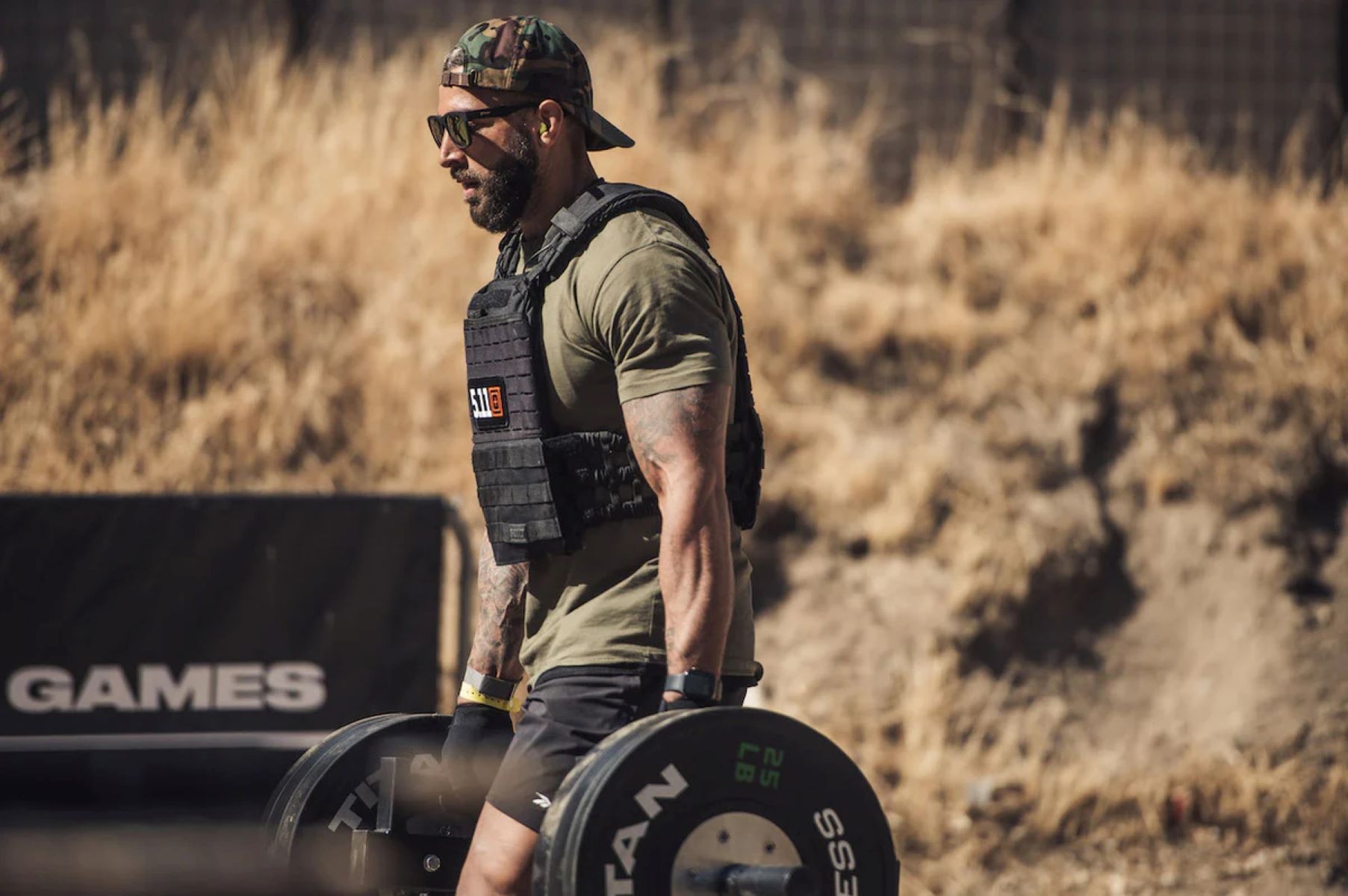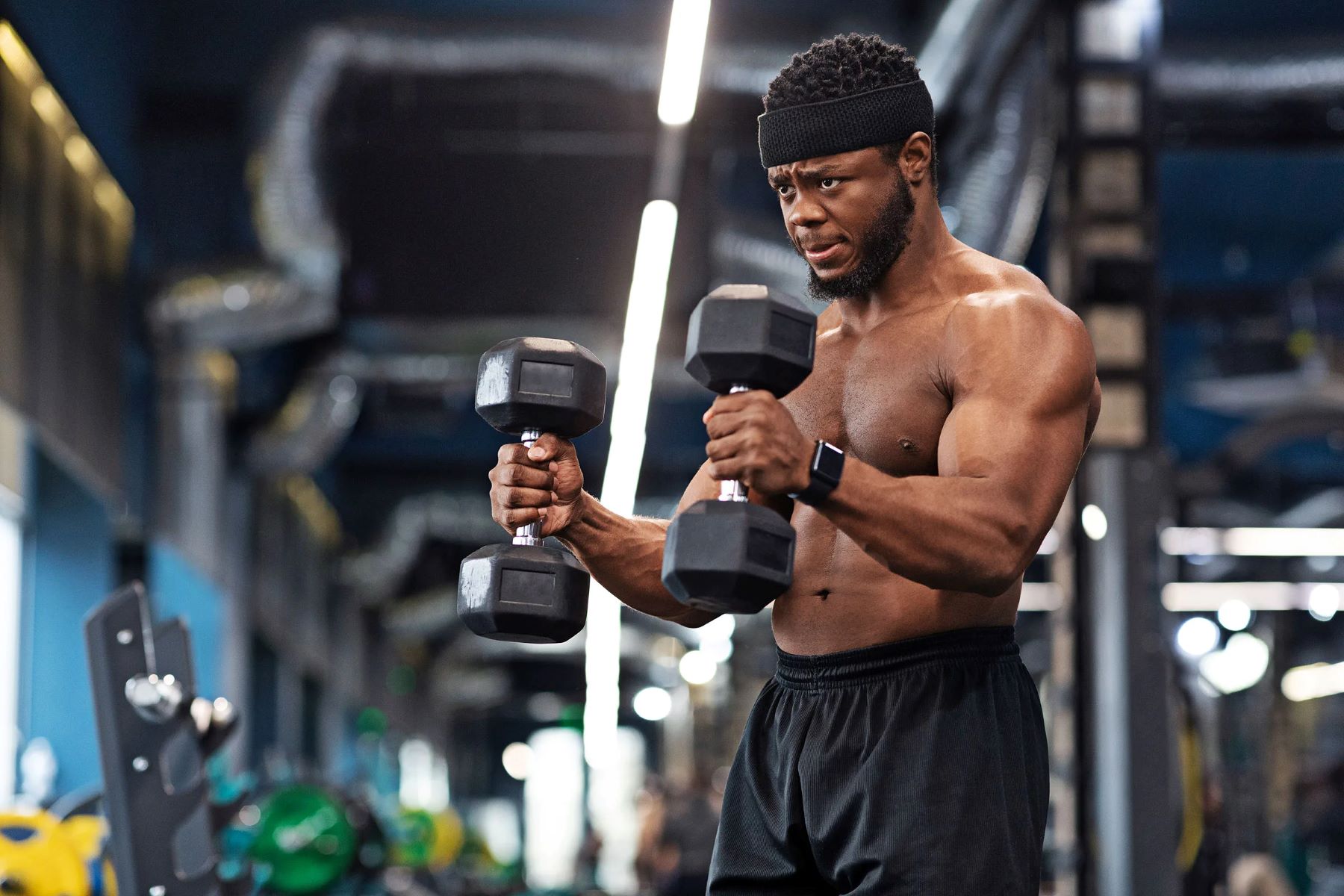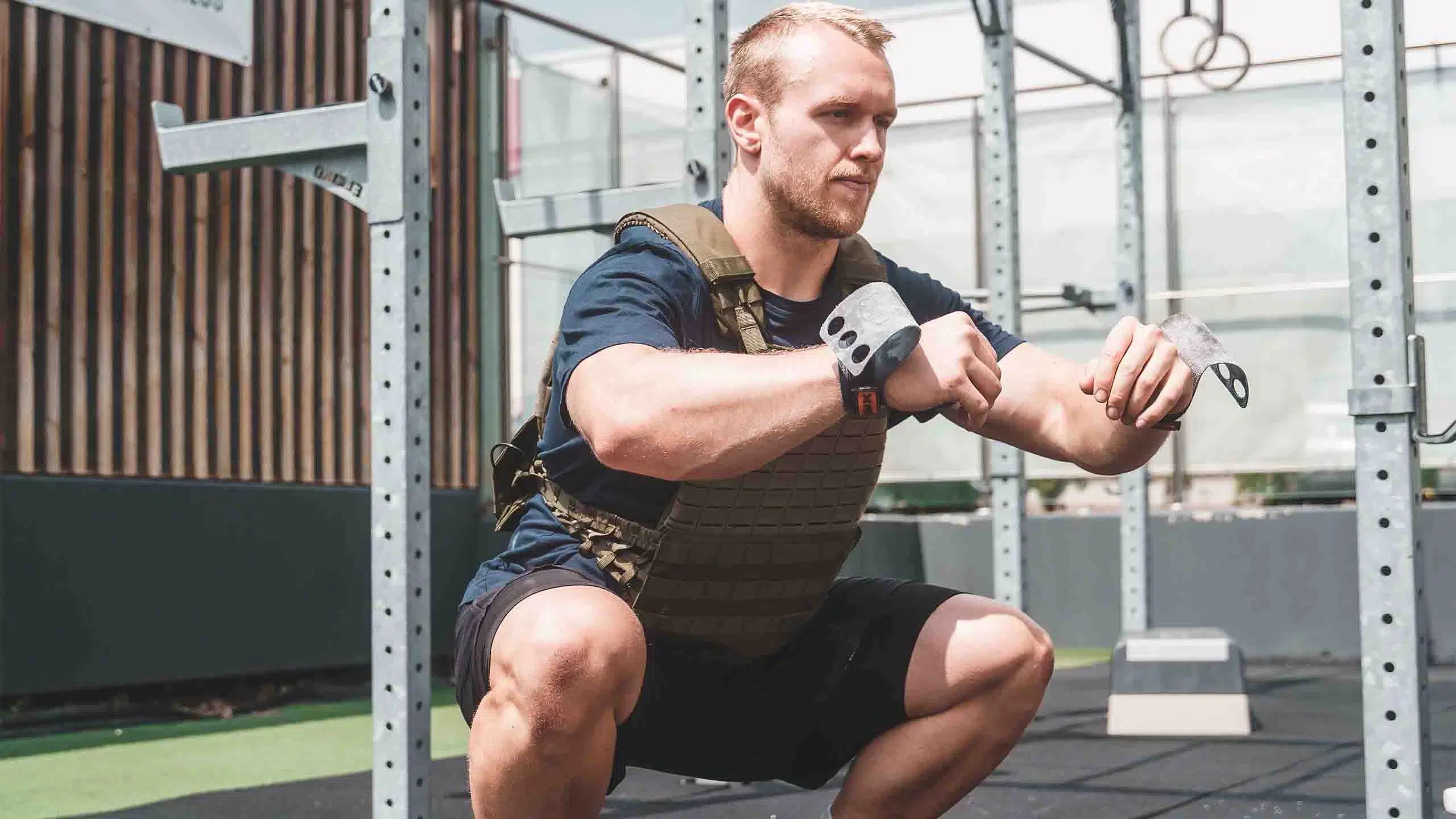

Featured
How To Increase Grip Endurance
Modified: March 1, 2024
Discover effective ways to increase your grip endurance with our featured guide. Enhance your grip strength and performance for better results in your workouts.
Introduction
Grip endurance is a crucial aspect of physical performance that often goes overlooked. Whether you’re an athlete, weightlifter, rock climber, or someone who uses their hands extensively in manual labor, having a strong and enduring grip is essential for optimal performance and injury prevention. Grip endurance refers to the ability of the muscles and tendons in your hands and forearms to sustain a grip for a prolonged period of time without fatigue. Having a strong grip alone is not enough; it is the endurance aspect that allows you to maintain a firm grasp when it matters the most.
Improving grip endurance can have a significant impact on a wide range of activities. For athletes, it can enhance performance in sports such as tennis, golf, and basketball, where a strong and enduring grip is needed to control the ball or racket. Weightlifters can benefit from increased grip endurance as it allows them to firmly grip and hold the barbell throughout movements like deadlifts and pull-ups. Rock climbers rely heavily on grip endurance to navigate challenging routes for extended periods. Even in everyday life, a strong and enduring grip can make tasks like carrying groceries, opening jars, or even typing on a keyboard easier and less fatiguing.
Understanding how grip endurance works and the factors that affect it is essential for anyone looking to improve this aspect of their physical fitness. In this article, we will delve into the importance of grip endurance, the factors that can impact it, specific exercises to enhance grip endurance, proper technique and progression, as well as the role of rest, nutrition, and injury prevention in optimizing grip endurance.
Understanding Grip Endurance
Grip endurance is not solely determined by the strength of your grip muscles. It involves a complex interplay between muscular strength, muscular endurance, and neuromuscular coordination. Muscular strength refers to the maximum force your grip muscles can generate, while muscular endurance is the ability of those muscles to sustain force over an extended period of time. Neuromuscular coordination is the efficient communication between your brain, nerves, and muscles to execute precise and controlled movements.
During activities that require grip endurance, such as holding onto a rock face or gripping a barbell, there is a continuous demand on the muscles and tendons in your hands and forearms. These muscles need to maintain a steady contraction to sustain the grip for an extended period without fatigue. The ability to generate force and resist fatigue relies on both the aerobic (oxidative) and anaerobic (non-oxidative) energy systems in your body.
Furthermore, grip endurance can be specific to certain movements or activities. For example, rock climbers require a combination of static and dynamic grip endurance, as they need to hold onto various types of handholds and make complex gripping movements while hanging or pulling. On the other hand, weightlifters may focus more on isometric grip endurance to maintain a firm grip on heavy weights for short bursts during lifts.
It is important to note that grip endurance can vary among individuals due to a variety of factors such as genetic predisposition, training history, and muscle imbalances. Some people may naturally have better grip endurance, while others may need to put in more effort to develop and improve it. Regardless of your starting point, with proper training and consistent practice, grip endurance can be enhanced.
To effectively improve grip endurance, it is crucial to understand the factors that can affect it. In the next section, we will explore the importance of grip endurance and how it can impact your performance in various activities.
Importance of Grip Endurance
Grip endurance plays a vital role in numerous activities and sports, making it an essential component of overall physical performance. Whether you’re a professional athlete or someone who engages in recreational activities, having strong grip endurance offers several benefits:
1. Enhanced Performance: Strong grip endurance allows athletes to maintain a firm grip on sports equipment, such as tennis rackets, golf clubs, or basketballs, increasing control and precision in their movements. This can lead to improved performance and better results in their respective sports.
2. Injury Prevention: A weak grip that fatigues quickly can increase the risk of accidents and injuries. For example, in weightlifting, a lack of grip endurance can cause the barbell to slip from the hands, potentially leading to strain or sprain. By improving grip endurance, individuals can better protect themselves from such mishaps and reduce the chances of injury.
3. Functional Strength: Grip endurance is not only essential for specific activities but also for everyday tasks. From carrying heavy grocery bags to opening jars or performing manual labor, a strong and enduring grip is invaluable. It enhances functional strength, making these tasks easier and less taxing on the hands and forearms.
4. Improved Muscular Balance: Many people focus primarily on major muscle groups but neglect the importance of grip endurance. Neglecting grip training can lead to muscular imbalances, as the stronger muscles overpower the weaker grip muscles. By developing grip endurance, individuals can achieve a more balanced and coordinated physique.
5. Enhanced Overall Endurance: Building grip endurance can positively impact overall endurance levels. As the hands and forearms are engaged in various activities, increased grip endurance reduces early fatigue and allows for longer durations of physical exertion.
In summary, grip endurance is not only important for athletes in specific sports but also for everyday individuals engaging in various activities. Whether it’s for improved performance, injury prevention, functional strength, muscular balance, or overall endurance, focusing on enhancing grip endurance can have wide-ranging benefits. In the next section, we will explore the factors that can affect grip endurance and how to address them through targeted exercises and techniques.
Factors Affecting Grip Endurance
Grip endurance can be influenced by multiple factors, both intrinsic and extrinsic. Understanding these factors can help in developing effective strategies for improving grip endurance. Let’s take a closer look at some of the key factors:
1. Muscular Strength: Grip endurance is directly influenced by the strength of the muscles involved, particularly the forearm flexors and extensors. Weakness in these muscles can limit the ability to maintain a sustained grip. Therefore, it is important to train and develop the strength of these muscles through specific exercises.
2. Muscular Endurance: Muscular endurance refers to the ability of the muscles to sustain repeated contractions over a prolonged period. Improving muscular endurance allows the grip muscles to resist fatigue and maintain a firm grip. Progressive overload, through gradual increases in both time and intensity, is key to improving muscular endurance.
3. Grip Technique: Using proper grip technique is crucial for optimizing grip endurance. Incorrect hand positioning or excessive gripping force can lead to unnecessary strain and fatigue. Learning and practicing appropriate grip techniques can improve efficiency and reduce fatigue during activities that require grip endurance.
4. Hand Size and Structure: Hand size and structure can impact grip endurance. Those with larger hands may have an advantage in distributing force and gripping objects, while individuals with smaller hands may need to focus on grip training to compensate for any potential limitations.
5. Neural Activation: Efficient neural activation and coordination are essential for optimal grip endurance. The ability of the brain to communicate effectively with the muscles involved in gripping can enhance performance and delay fatigue. Focusing on neuromuscular training and coordination exercises can improve neural activation for better grip endurance.
6. Overall Fitness Level: The overall level of fitness also affects grip endurance. Individuals with higher cardiovascular fitness and overall stamina may have a better capacity to sustain grip for longer periods. Incorporating cardiorespiratory exercises, such as running or cycling, can improve overall fitness and indirectly enhance grip endurance.
7. Equipment and Surface Texture: The type of equipment or surface being gripped can impact grip endurance. Smooth or slippery surfaces may require a stronger grip effort, causing faster fatigue. Training with different textures and surfaces can challenge and improve grip endurance in various situations.
Understanding these factors allows you to target specific areas for improvement. By addressing weaknesses and implementing appropriate training strategies, you can enhance your grip endurance. In the next section, we will explore specific exercises and techniques to develop and improve grip endurance effectively.
Specific Exercises for Increasing Grip Endurance
Improving grip endurance requires a combination of strength training, targeted exercises, and progressive overload. By incorporating specific exercises that target the muscles and movements involved in gripping, you can effectively increase your grip endurance. Here are some exercises to consider:
1. Farmer’s Walk: This exercise involves carrying a heavy load (such as dumbbells or kettlebells) in each hand while walking for a specific distance or time. The constant grip and the load placed on the forearms help develop grip endurance.
2. Plate Pinches: Place two weight plates of equal size and grip them together using your fingertips and thumb, with the smooth side facing out. Hold the plates for as long as you can while maintaining a secure grip. This exercise specifically targets the pinch grip strength and endurance.
3. Towel Pull-Ups: Hang a towel over a pull-up bar and grasp the ends of the towel instead of the bar. Perform pull-ups or hang from the towel for a specific time. This exercise places extra emphasis on the grip muscles and promotes endurance.
4. Wrist Roller: A wrist roller is a cylindrical device with a rope attached to a weight. Hold onto the grip and roll the weight up and down by rotating your wrists. This exercise targets the muscles responsible for hand and forearm rotation, enhancing grip endurance.
5. Hand Grippers: Hand grippers are portable devices that you squeeze together using your hand muscles. Start with a gripper that provides a challenging but manageable resistance and gradually work your way up to stronger grippers as your grip strength and endurance improve.
6. Dead Hangs: Hang from a pull-up bar or any sturdy overhead apparatus with an overhand grip for as long as possible. This exercise builds grip endurance by directly challenging the muscles and tendons responsible for sustained grip strength.
7. Climbing Rope: Practicing rope climbing is an excellent way to improve grip endurance. The constant strain on the grip muscles when climbing up the rope challenges and enhances grip endurance.
Including a variety of these exercises in your training routine will help develop strength, endurance, and coordination in your grip muscles. Remember to gradually increase the intensity, duration, or weight load as you progress to continue challenging your grip endurance. In the next section, we will discuss the importance of proper technique when performing grip endurance exercises.
Proper Technique for Grip Endurance Exercises
Performing grip endurance exercises with proper technique is essential to ensure optimal effectiveness and minimize the risk of injury. Here are some key considerations to keep in mind:
1. Grip Form: Maintain a firm grip on the equipment or object being used for the exercise. Ensure that your fingers are fully wrapped around and securely holding the object, distributing the pressure evenly across the fingers and thumb.
2. Hand Position: Pay attention to the positioning of your hands during exercises. The specific grip and hand placement will vary depending on the exercise, but it is important to maintain a neutral wrist position to avoid straining the joints and tendons.
3. Range of Motion: Perform each exercise through a full range of motion. This allows for proper muscle activation and engagement, ensuring that you are effectively targeting the grip muscles and improving endurance throughout their entire range of movement.
4. Breathing: Focus on proper breathing technique while performing grip endurance exercises. Exhale during the most exertive phase of the movement and inhale during the relaxation phase. Proper breathing helps maintain stability and enhances overall performance.
5. Gradual Progression: Start with lighter weights or lower intensity and gradually increase the load, duration, or intensity as your grip endurance improves. This progressive overload approach allows for steady and sustainable gains without overstraining or risking injury.
6. Rest Periods: Allow sufficient rest periods between sets and exercises to allow for recovery. Overtraining or excessively short rest periods can contribute to fatigue and decrease grip endurance. Listen to your body and give it adequate time to recover.
7. Proper Warm-up: Prior to performing grip endurance exercises, it is crucial to warm up the muscles and tendons in your hands and forearms. Perform dynamic stretches, wrist rotations, and light grip exercises to prepare your grip muscles for the upcoming workload.
8. Posture and Alignment: Maintain proper overall body posture and alignment during grip endurance exercises. Engage your core, keep your shoulders down and back, and avoid excessive strain on your neck and back. This ensures optimal mechanics and reduces the risk of injury.
By following these guidelines, you can maximize the benefits of grip endurance exercises and minimize the risk of injury. It is also advisable to seek guidance from a qualified fitness professional to ensure proper form and technique for each exercise. In the next section, we will discuss the importance of progression and overload for continuous improvement in grip endurance.
Progression and Overload for Continuous Improvement
In order to continuously improve grip endurance, it is important to incorporate progression and overload into your training routine. This ensures that your grip muscles are consistently challenged and stimulated to adapt and grow stronger. Here are some strategies for effective progression and overload:
1. Gradual Increase in Intensity: Start with a manageable level of intensity or resistance and gradually increase it over time. This can be achieved by adding more weight, using thicker bars or grips, or increasing the duration or repetitions of the exercise. Aim to challenge yourself without sacrificing proper technique or risking injury.
2. Increasing Time Under Tension: Extend the duration of your grip endurance exercises to increase the time under tension for your muscles. Progressively increase the amount of time you can hold a grip exercise or perform the exercise for more repetitions. This prolonged engagement strengthens the grip muscles and enhances endurance.
3. Implementing Supersets or Circuits: Combine grip endurance exercises with other exercises in superset or circuit formats. This allows you to work multiple muscle groups while simultaneously increasing grip endurance. Alternating between exercises promotes overall strength and endurance improvements.
4. Implementing Drop Sets or Rest-Pause Sets: After reaching muscle fatigue with a particular weight or resistance, continue the exercise by reducing the weight or intensity and performing additional repetitions. This technique, known as drop sets, helps extend the duration of the exercise and further challenges the grip muscles.
5. Incorporating Varied Surfaces and Grips: Experiment with different surfaces and grips to simulate real-life scenarios and build adaptability. Train on uneven surfaces, use objects with different textures, or experiment with different grip widths to challenge your grip muscles in various ways.
6. Tracking and Monitoring Progress: Keep a training log to track your progress and make adjustments as needed. Note the weights used, durations, and any other relevant details. Regularly reassess your grip strength and endurance to ensure you are progressing effectively.
7. Recovery and Rest Days: Allow sufficient time for recovery between training sessions to prevent overtraining and facilitate muscle growth. Adequate rest and recovery are crucial for adaptation and continuous improvement. Make sure to listen to your body and avoid pushing beyond your limits.
Remember, it’s essential to progress gradually and avoid overtraining or going too fast too soon. Consistency and patience are key to achieving long-term improvements in grip endurance. By implementing proper progression and overload strategies, you can continue to challenge your grip muscles and achieve continuous improvement. In the next section, we will explore common mistakes to avoid when training for grip endurance.
Common Mistakes to Avoid
When training for grip endurance, it is important to be aware of common mistakes that can hinder progress or lead to injury. By avoiding these mistakes, you can optimize your training and maximize the benefits. Here are some common mistakes to watch out for:
1. Neglecting Proper Technique: Using incorrect form or technique during grip endurance exercises can reduce their effectiveness and increase the risk of injury. Always prioritize proper form, hand positioning, and range of motion to ensure that you are targeting the intended muscles and minimizing unnecessary strain on other joints and tendons.
2. Overtraining: Excessive training without allowing sufficient rest and recovery can lead to overtraining. Overtraining prevents proper muscle repair and hampers progress. It is important to listen to your body, build rest days into your training schedule, and provide ample time for recovery.
3. Lack of Progression: Failing to progressively challenge your grip muscles can stall progress. Without gradually increasing the intensity, duration, or resistance of your grip endurance exercises, your muscles may plateau, limiting their ability to improve and grow stronger. Ensure that you consistently challenge yourself by progressively overloading your grip exercises.
4. Ignoring Muscular Balance: It is crucial to maintain balance between the muscles involved in grip endurance exercises. Neglecting the opposing muscles, such as the forearm extensors, can lead to muscle imbalances and potential injuries. Incorporate exercises that target both the flexors and extensors to maintain muscular balance and enhance overall grip endurance.
5. Lack of Variety: Performing the same grip endurance exercises repeatedly can limit progress and lead to boredom. Adding variety to your training routine not only keeps things interesting but also challenges your muscles in different ways. Experiment with different exercises, grips, and surfaces to continuously challenge and improve your grip endurance.
6. Neglecting Warm-up and Cool-down: Failing to properly warm up before grip endurance exercises and cool down afterward can increase the risk of injury and hinder recovery. Always incorporate dynamic stretches, wrist rotations, and light grip exercises as part of your warm-up routine and include static stretches and foam rolling in your cool-down to optimize flexibility and aid recovery.
7. Insufficient Grip Strengthening: While some general strength training exercises indirectly improve grip strength and endurance, it is important to incorporate specific grip training exercises. Neglecting targeted grip strengthening exercises can limit progress in grip endurance. Ensure that you include exercises that directly challenge the grip muscles in your training routine.
By avoiding these common mistakes, you can ensure that your grip endurance training is effective, safe, and yields optimal results. Remember to maintain proper technique, avoid overtraining, progress gradually, maintain muscular balance, incorporate variety, and provide proper warm-up and cool-down routines. In the next section, we will discuss the importance of rest and recovery for optimal grip endurance.
Rest and Recovery for Optimal Grip Endurance
Rest and recovery play a crucial role in optimizing grip endurance. While it may be tempting to push yourself to the limit with intense training sessions, neglecting rest and recovery can hinder progress and increase the risk of injury. Here are some key considerations for ensuring proper rest and recovery:
1. Adequate Sleep: Quality sleep is essential for muscle repair, growth, and recovery. Aim for 7-9 hours of uninterrupted sleep each night to optimize your body’s recovery processes. Prioritize a consistent sleep schedule and create a sleep-friendly environment to enhance the quality of your sleep.
2. Active Recovery: Engaging in light activities on rest days can aid in recovery by increasing blood flow to the muscles and promoting circulation. Active recovery activities can include gentle stretching, yoga, low-intensity cardio, or other non-demanding exercises that help reduce muscle soreness and stiffness.
3. Proper Nutrition: Fueling your body with a balanced diet is critical for recovery. Consume enough protein to support muscle repair, carbohydrates to replenish glycogen stores, and healthy fats to support overall health. Stay hydrated throughout the day to optimize muscle function and recovery.
4. Stretching and Foam Rolling: Incorporate stretching exercises and foam rolling into your routine to improve flexibility, release muscle tension, and reduce the risk of injury. Focus on stretching the muscles of the hands, forearms, and upper body, as well as rolling the forearms and wrists to alleviate any tightness.
5. Recovery Techniques: Explore various recovery techniques to aid in muscle recovery, such as massage therapy, compression sleeves or wraps, ice or cold-water immersion, and contrast baths. These techniques can help reduce inflammation, improve blood circulation, and accelerate the recovery process.
6. Periodization: Implementing planned periods of lower-intensity or deloading weeks in your training routine allows for proper recovery and prevents overtraining. Periodization helps prevent plateauing, promotes continued progress, and reduces the risk of overuse injuries.
7. Listen to Your Body: Pay attention to how your body feels and adjust your training intensity and volume accordingly. Pushing through excessive fatigue or ignoring pain signals can lead to injury and hinder recovery. It is essential to respect your body’s limits and modify your training as needed.
Remember, rest and recovery are essential components of any training program, including grip endurance training. Failing to prioritize adequate rest can impede progress and increase the risk of overuse injuries. By incorporating rest days, active recovery, proper nutrition, stretching, and other recovery techniques into your routine, you can optimize grip endurance and ensure long-term progress. In the next section, we will discuss the role of nutrition and hydration in enhancing grip endurance.
Nutrition and Hydration for Enhancing Grip Endurance
Nutrition and hydration are vital factors that can greatly impact grip endurance and overall performance. Proper fueling and hydration support muscle function, aid in recovery, and optimize physical performance. Here are some key considerations for enhancing grip endurance through nutrition and hydration:
1. Sufficient Caloric Intake: Ensure you consume enough calories to meet the energy demands of your training sessions. Caloric deficit can lead to reduced strength and endurance, affecting your grip performance. Consult with a registered dietitian or nutritionist to determine your specific caloric needs based on your training goals.
2. Protein for Muscle Repair: Adequate protein intake is crucial for muscle repair and growth. Consume a source of high-quality protein, such as lean meats, poultry, fish, eggs, dairy products, or plant-based options like legumes, tofu, and quinoa, to support muscle recovery and maintain muscle mass.
3. Carbohydrates for Energy: Carbohydrates serve as the primary energy source for physical activity. Including quality carbohydrates, such as whole grains, fruits, vegetables, and starchy foods, in your diet provides the necessary fuel for optimal grip endurance. Prioritize complex carbohydrates for sustained energy release.
4. Healthy Fats for Overall Health: Incorporate moderate amounts of healthy fats, such as nuts, seeds, avocados, and olive oil, into your diet. Healthy fats provide essential fatty acids that support overall health and aid in nutrient absorption.
5. Hydration for Optimal Performance: Stay well-hydrated to support performance and prevent dehydration, which can negatively affect grip endurance. Drink water regularly throughout the day, both during training sessions and throughout daily activities. Monitor your urine color; pale yellow urine indicates good hydration levels.
6. Electrolyte Balance: Electrolytes, such as sodium, potassium, calcium, and magnesium, are crucial for maintaining proper muscle function and hydration balance. Consume electrolyte-rich foods, such as bananas, oranges, leafy greens, and electrolyte-enriched sports drinks, to replenish electrolyte levels during intense workouts or prolonged physical activities.
7. Timing of Meals: Plan your meals strategically to optimize energy levels during your grip endurance training. Consume a balanced meal or snack containing carbohydrates and protein within 2-3 hours before your training session. Additionally, refuel with a post-workout meal or snack within 30-60 minutes of completing your training to aid in muscle recovery.
It is important to note that individual nutritional needs can vary based on factors such as age, sex, body composition, and training goals. Consulting with a registered dietitian or nutritionist can provide personalized guidance and ensure you are meeting your specific nutritional needs for enhancing grip endurance.
By fueling your body with the right blend of macronutrients, staying hydrated, and timing your meals effectively, you can optimize your grip endurance and overall performance. Nutrition and hydration go hand in hand with training to help you reach your grip endurance goals. In the next section, we will discuss injury prevention and safety measures to keep in mind during grip training.
Injury Prevention and Safety Measures
When engaging in grip endurance training, it is crucial to prioritize injury prevention and implement safety measures. By following proper techniques and taking necessary precautions, you can significantly reduce the risk of injuries. Here are some important injury prevention and safety measures to keep in mind:
1. Warm-up and Stretching: Prior to grip endurance exercises, ensure you engage in a thorough warm-up routine. This should include dynamic stretches, wrist rotations, and light exercises to prepare the muscles and increase blood flow. Stretching the hand, forearm, and upper body muscles can also help prevent strains and sprains.
2. Gradual Progression: Progress gradually by increasing the intensity, duration, or resistance of grip endurance exercises. Avoid jumping into high-intensity workouts without building a foundation of strength and endurance. Overloading too quickly increases the risk of overuse injuries and strain on the muscles and tendons.
3. Proper Technique and Form: Always prioritize proper technique and form during grip endurance exercises. Improper form can lead to unnecessary stress on the muscles, tendons, and joints, increasing the risk of injury. Seek guidance from a qualified fitness professional if you are unsure about proper technique for any exercise.
4. Use Appropriate Equipment: Ensure that you are using suitable equipment for grip exercises. This includes using grips or gloves if necessary to provide extra support and prevent blisters or calluses. It is essential to check the condition of equipment regularly to ensure it is in good working order and provides adequate grip.
5. Listen to Your Body: Pay attention to any signs of pain, discomfort, or excessive fatigue during training. Pushing through pain can lead to further injury. It is important to listen to your body and modify or stop an exercise if you experience any severe pain, joint instability, or discomfort.
6. Balance and Stability Training: Incorporate exercises that improve overall balance and stability, as it plays a crucial role in preventing injuries during grip endurance training. Strengthening core muscles, including the abdominals and spinal erectors, can enhance stability and prevent falls or unnecessary strain on the upper body.
7. Rest and Recovery: Allow sufficient time for rest and recovery to prevent overuse injuries. Giving your muscles, tendons, and connective tissues time to repair and rebuild is crucial for long-term progress and injury prevention. Incorporate rest days into your training schedule and listen to your body’s signals for adequate recovery.
8. Seek Professional Guidance: If you are new to grip endurance training or have specific concerns or limitations, consider consulting with a certified strength and conditioning specialist or physical therapist. They can provide individualized guidance, evaluate your form, and offer tailored exercises to prevent injuries and maximize your grip endurance potential.
By following these injury prevention and safety measures, you can minimize the risk of injuries and ensure a safe training environment for grip endurance. Remember that injury prevention should be a top priority to maintain long-term progress and enjoy the benefits of grip endurance training.
Conclusion
Grip endurance is a crucial aspect of physical performance that impacts a wide range of activities, from sports to everyday tasks. Developing and improving grip endurance requires a comprehensive approach that includes targeted exercises, proper technique, progression, rest, and adequate nutrition and hydration. By understanding the factors that affect grip endurance and implementing effective training strategies, individuals can optimize their grip strength, endurance, and overall performance.
Throughout this article, we explored the importance of grip endurance, its underlying factors, specific exercises to enhance grip endurance, and the significance of proper technique and progression. We also discussed the role of rest and recovery, the impact of nutrition and hydration, and the importance of injury prevention and safety measures.
Remember, building grip endurance takes time, consistency, and a conscious effort to challenge yourself while prioritizing safety. Be patient with your progress, celebrate the small victories, and continually strive for improvement. Consult with professionals if needed and listen to your body’s signals to ensure you are training effectively and avoiding unnecessary strain or injury.
By developing strong grip endurance, you can enhance your performance in various sports, improve functional strength for everyday activities, and reduce the risk of injuries. Embrace the journey of improving your grip endurance and enjoy the benefits it brings to your physical fitness and overall well-being.









